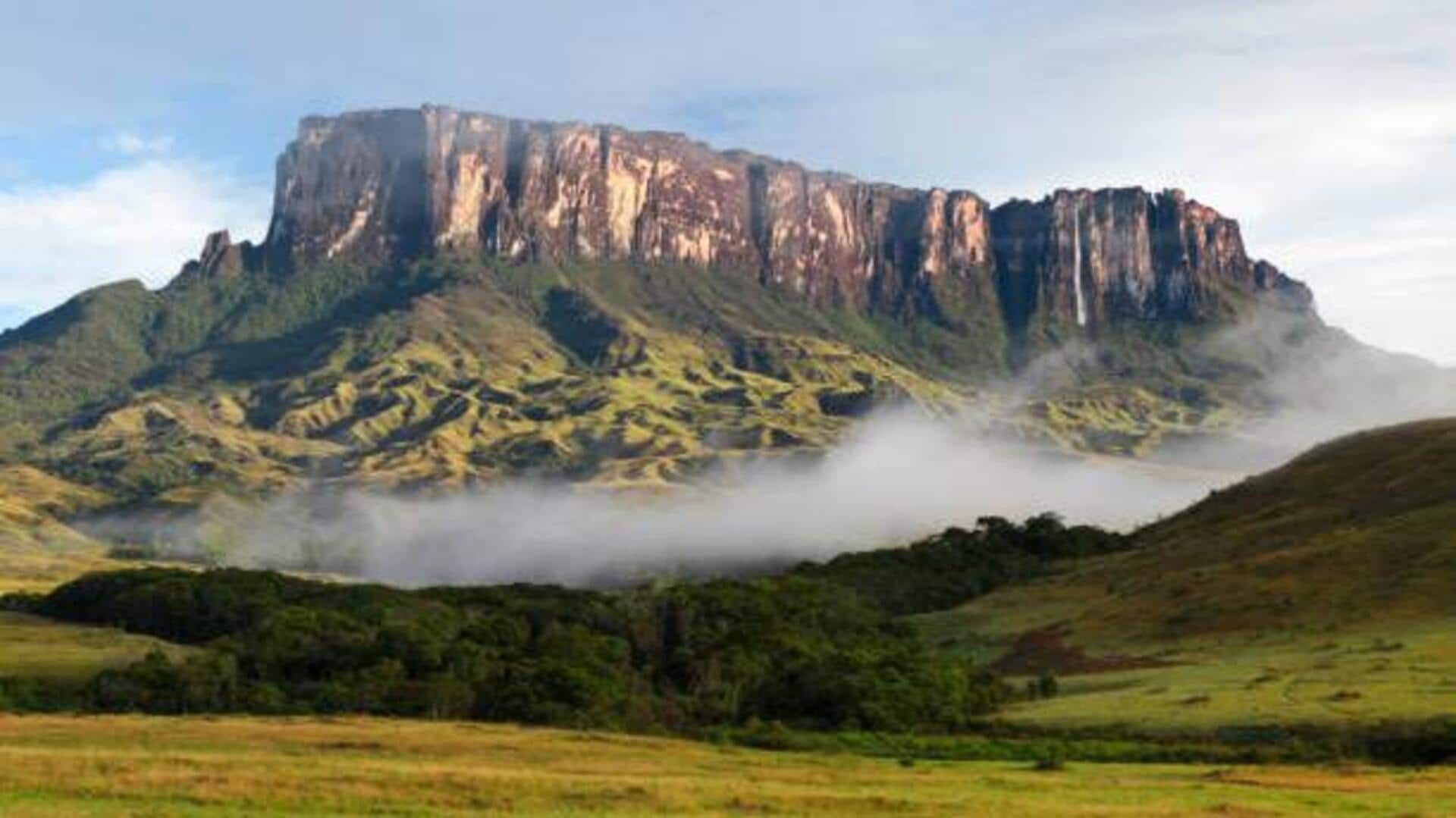
Hiking through Tepuis of Venezuela: A guide
What's the story
Tepuis, the spectacular table-top mountains of Venezuela, provide a once-in-a-lifetime climbing experience. These ancient formations jut out dramatically from the land, giving climbers stunning views and thrilling climbs. Renowned for their steep cliffs and unique ecosystems, Tepuis are the ultimate paradise for adventure lovers and nature enthusiasts. Climbing these peaks demands meticulous planning and reverence towards the fragile ecosystem they preserve.
Geography
Understanding Tepui geography
Tepuis are part of the Guiana Shield in South America. They are defined by their flat summits and steep walls. They are basically remains of an ancient plateau, which eroded over millions of years. The unique geography makes each summit an isolated ecosystem, hosting many endemic species. Climbers have to traverse through dense forests at the base, before facing vertical rock faces, to get to these remote plateaus.
Gear
Essential gear for Tepui climbing
Climbing Tepuis requires specialized equipment as they are difficult to climb. Mandatory gear includes appropriate climbing shoes, harnesses, ropes, helmets, and clothes suitable for weather conditions. Since weather atop these peaks can be unpredictable, climbers should also carry waterproof gear and enough supplies for a long stay on the mountain.
Weather
Navigating weather challenges
The weather on Tepuis can be quite unpredictable, with sudden rain showers and strong winds common throughout the year. Climbers should also prepare themselves for rapid changes in temperature as they ascend from tropical forests to cooler summit climates. Monitoring local weather forecasts is crucial before climbing to ensure safety during expeditions.
Ecosystems
Respecting local ecosystems
Each Tepui hosts unique flora and fauna due to its isolation from surrounding landscapes. Climbers must adhere to strict environmental guidelines to protect these fragile ecosystems from damage or contamination. This includes minimizing waste impact by carrying out all trash generated during climbs and avoiding disturbance of native plant life or wildlife encountered along routes.